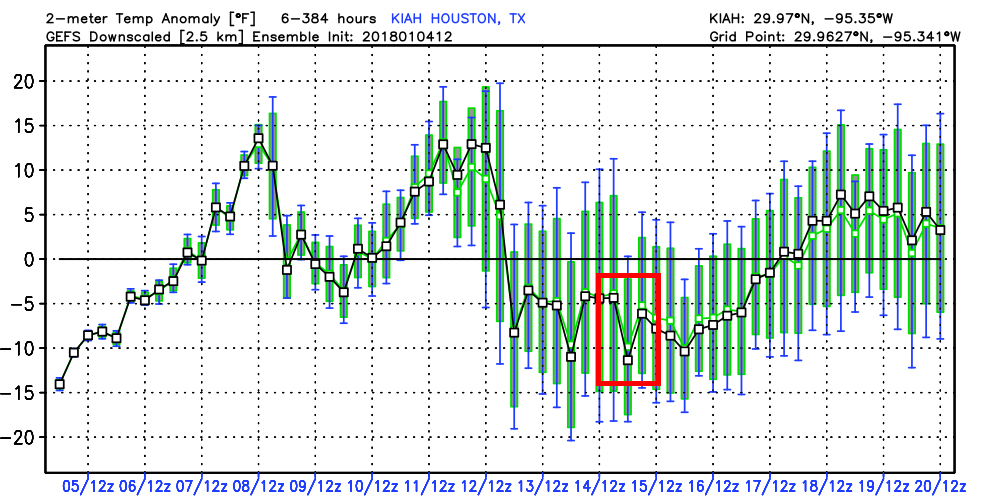The normal high temperature for Houston, in mid-January, is 63 degrees, with a low of 43. Confidence is increasing that we’ll see conditions for the 2018 Houston Marathon that are cooler than this. Although not ideal for spectators, I find the colder the weather, the longer I can run. So I welcome the cold.
We’re still more than nine days away from the marathon on Jan. 14, but the broad outlines of weather for late next week are starting to come into slightly better focus. It now seems likely that daytime temperatures will warm during the middle of next week up to around 70 degrees. After that, on Thursday or Friday, it appears as though a cold front will slide through the area—perhaps bringing some rain, perhaps not bringing that much.

If this holds, both Saturday and Sunday mornings would be chilly and dry, with lows in the upper 30s or 40s, rising up to daytime highs in the 50s. For now, this is the most likely scenario, probably a greater than 50 percent likelihood. Again, it’s difficult to have too much confidence in a forecast this far out, but the trendlines here are positive.


